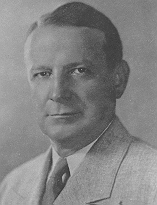Vincent Miles Speech
Excerpts from Speech
by Vincent M. Miles
at Governors' Conference,
St. Louis, Missouri,
November 16, 1936

OLD-AGE RETIREMENT BENEFITS
I believe that everyone here will agree that there is a dire need for some measure of support to the wage earners of this country when they become too old for work. According to the report of the President's Committee on Economic Security, 3,750,000 people over 65 years old--approximately half the entire number of the population in this group in 1935--were dependent upon public assistance, private charity or their relatives and friends. Even in 1929, the year which is considered the most prosperous for the majority of our people, estimates show that at least a third of these aged people were dependent upon others for support. Also in that year, according to the most reliable estimates, 44 percent of those with jobs, excepting farmers, but including agricultural labor working for pay, earned less than $1,000 a year--not a large income from which to save enough to support themselves and their families during times of emergency or when they become too old for work. As the percentage of aged persons is increasing, the problem of their insecurity becomes more serious each year. There are today approximately 7,500,000 men and women in this country over 65 years old. By 1980 it is predicted their number will have increased by 9,500,000--or more than doubled.
Under the provisions of the act for old-age benefits, qualified workers will receive retirement benefits, as a matter of right, at the age of 65. No means test will be required. The old-age provisions are best understood if we compare them to insurance. They apply to wage and salary earners who are now young or middle-aged--men and women who work in industry, in business offices, in commercial enterprises of all kinds--about 26 million workers in all. This part of the Social Security Act provides, for these men and women, an income for life after age 65 when they are no longer at work. This income will be paid to them by the United States Government in monthly checks--like the installments on annuities from an insurance company. Or a payment will be made to the worker's family if he dies. Whatever happens, the worker or his family gets back more money than he pays in.
Like an insurance company policy, the worker's old-age benefit from the Government must be paid for in advance. Instead of weekly, monthly, quarterly, or yearly premiums, however, the Government Collects weekly or monthly payments which are called taxes. But these premiums, or taxes, are shared by the employers and the workers equally, although the direct benefits come to the workers only.
Any sound insurance company has a reserve fund. The United States Government, in the Social Security Act, sets aside an Old-Age Reserve Fund out of which to pay the workers' annuities when they come due. This Reserve Fund is held in the United States Treasury and is guaranteed to draw not less than 3 percent interest. That means that 3 cents will be added to every dollar in the fund every year. The Federal plan was worked out with the advice and collaboration of insurance experts from private companies. And most of the big insurance companies welcome it because it covers a field hitherto uncovered--a field too big and expensive in fact, for any private insurance enterprise to cover.
The taxes, or premiums, called for in this law will be paid by employers and by workers, at the rate of 1 cent on each dollar of the worker's earnings, up to earnings of $3,000 a year. That will mean for the next 3 years, 15 cents a week, 25 cents a week, 30 cents a week or more, according to what the worker earns. In other words, during the next 3 years, beginning January 1, 1937, the worker's premium will be 1 cent for every dollar he earns and at the same time the employer will pay 1 cent for every dollar the worker earns, up to $3,000 a year of earnings.
After the first 3 years, the worker and the employer will each pay half a cent more every 3 years, until finally, beginning in 1949, twelve years from now, each will invest for old-age security 3 cents on each dollar the worker earns, up to $3,000 a year. That is the most anybody will ever pay.
We are glad to say that the first part of this initial work has been completed. Under the system which we have formulated, an account will be maintained for each of the millions of workers who will be eligible for either monthly, lump-sum, or death benefits. On January 1, 1937, benefits will be begin to accrue for approximately 26 million wage earners.
On November 6, the Social Security Board, with the aid of 45,000 post offices, put into action the plan to set up the individual accounts for the wage earners in all parts of the United States.